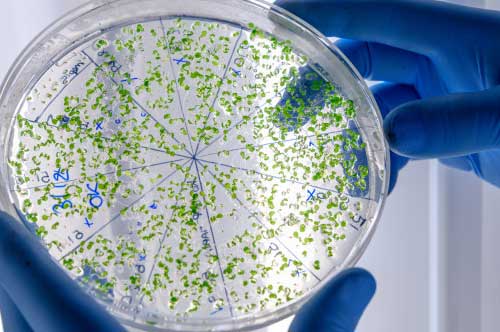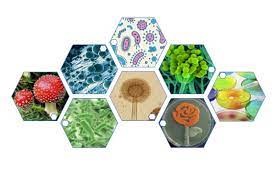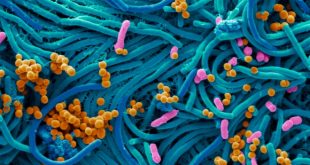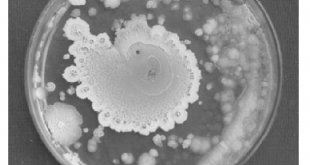Microbiology (Greek word; micros “small” and bios “life”) is one of the most important branches of science which has been contributing to so many sectors like medical, soil, food, etc. Microbiology is a part of scientific study that deals with small organisms which can’t be seen by the naked eye but with an electron microscope they can be seen. Such as bacteria, fungi, protists, viruses, mycoplasma, rickettsia, actinomyces, etc. It is concerned with their form, structure, reproduction, physiology, metabolism, classification, and identification. It includes the study of their distribution in nature, their relationship to each other and to other living organisms, their effect on human beings and other plants and animals, and their abilities to make physical and chemical changes in our universe.
Our planet has always been in the age of bacteria. Ever since the first fossil bacteria entombed in rocks more than 3.5 billion years ago. On this account, Stephen Giovannoni said, “On any possible reasonable criterion bacteria have always been the dominated forms of life on earth.”
Microbiology Then and Now
In the middle and late 1800, Louis Pasteur performed some experiments to discover the reason behind the sour taste of dairy products and wine. He discovered that the bacteria were the reason. After this experiment science got to know the importance of microorganisms in everyday life. Through furthermore experiments scientists happened to know that microorganisms also could cause human illness. It was rarely possible to research viruses at that time because the electron microscope wasn’t developed then. In the 1940s, the electron microscope was developed and perfected. The development of the microscope added a new dimension to the research of microorganisms.
Modern microbiology is adding new things to our daily life. Biotechnology is one of the major areas of applied microbiology. Scientists are inventing new and unique microorganisms and their uses and harmful sides.
Microbial world

In this visible universe, there are 10^21 stars. But the microbial world consists of 1 trillion species of microbes. Among them, 99.99% have yet to be discovered. There are 1 × 10^31 viruses and 5× 10^30 bacteria on this living earth.
SAR11 (Pelagibacter ubique) is a group of small bacteria that can be found throughout the oceans. It reaches a global population size of 2.4×10^28 cells-approximately 25% of all plankton. Stephen Giovannoni invented these bacteria. It has been found 3000 meters in depth in the coastal area. It is vibrioid(comma-shaped) and only 0.4-0.9 µm in length.
Microorganism
Micro simply means small. So, comparatively small organisms can be called microorganisms. The theory of not being able to watch microorganisms with naked eyes is slightly inaccurate. Because fungi and algae are multicellular microorganisms that can be seen by the naked eyes. Sometimes it can be thought that microbes are simple but the smallest microorganisms like viruses have a complex system and they can accomplish the intricate function of reproduction.
Size of some major groups of microorganisms
- Bacteria: Average size of bacteria is between 0.2 and 2.0 µm.
- Viruses: Most viruses range in size from 5 nm to 300 nm. In recent years some giant viruses have been identified whose size is in the range of 700-1000 nm.
- Fungi: In general fungi are 2 to 10 µm and several tenths of an inch in length.
- Molds range from 1 micron to 20 microns.
- Protozoa: Range is 1 µm to several millimeters.
- Algae: Range: 0.2-several meters.
Scope of Microbiology
Microbes are present everywhere on our planet. It can be in soil, water, atmosphere even in our bodies. The number of microbes is great. And its importance is also huge. For example, it can be used for the production of some specific foods like bread, wine, yogurt, cheese, etc. Also in the medical sector, industry, agriculture, water industry, chemical technology microbiology is being used for years. The study of microbiology contributes a lot to understanding the consequences of microbes in our life.
Microbiology is greatly used in-
- Food science
- Agriculture
- Genetics
- Medicine
- industry
- Research
Applied areas of microbiology
-

Applied areas of Microbiology Microorganisms perform duty on both sides: for human well-being and disease. They occur in large numbers in most natural environments and bring about many changes, some desirable and some undesirable. Some applications are-
- Creates diseases in humans, animals, and plants.
- Enhancement of soil fertilization.
- In geochemical, deposition of minerals, formation of coal.
Applied aspects of microbiology
Microbiology is one of the largest biological sciences which is used in different sites. Mostly used in medical science, genetics, food, etc. The followings are applied aspects of microbiology:
- Medical and public health microbiology: In the mid-1880s for the development of germ theory and laboratory techniques, many disease-causing microorganisms were rapidly discovered. And scientists were able to find the treatments for those diseases. Such as typhoid fever, malaria, tuberculosis, cholera, tetanus, etc. Even using microorganisms, scientists were able to develop vaccines, antibiotics, eradication of smallpox. Despite great inventions in medical areas scientists are still unable to find some fatal diseases solutions (HIV, HPS).
- Genetic microbiology: In DNA technology, bacteria (E. coli) are an important substance. Biotechnology makes it possible to create new genetic features and that is done mostly by microorganisms.
- Industrial microbiology: For converting raw materials to new materials microorganisms are used as a chemical factory.
- Food microbiology: Microbes are two types in food sites.
- Spoilage of food: Microorganisms cause spoilage of food. They grow in food like dairy, fat-containing foods, carbohydrates, etc. So, there are many preservatives to prevent food spoilage.
- Variation of foods: Fermented milk cheese yogurts and many more dairy products contain different types of microbes. Also, in beer wine and many more drinks microorganisms are used as the main process.
- Agricultural Microbiology: This section is divided into 2 parts. 1. Soil 2. Plant
- Soil microbiology: In soil, there are millions of microorganisms. Microbes help to deposit the dead animals with soil and make the soil fertile. In the nitrogen cycle, microbes play a great role. Microorganisms capture nitrogen and convert it into a combined form of nitrogen that is used by plants as a nutrient.
- Plant Microbiology: Plants maintain a relationship with microorganisms. A study about this relation is called plant pathology.
- Aeromicrobiology: Study of living microorganisms in the air is called Aeromicrobiology.
- Exo microbiology: Exploration for life in outer space.
Related Articles
Reference
- Microbiology An Introduction, Twelfth Edition by Gerard Tortora, Berdell Funke, Christine Case, Derek Weber, Warner Bair III
Revised by
- Tarannum Ahsan on 15th April, 2022.
 Plantlet The Blogging Platform of Department of Botany, University of Dhaka
Plantlet The Blogging Platform of Department of Botany, University of Dhaka






It was interesting to learn that microorganisms work for both human well-being and the creation of diseases. I imagine if you work for a pharmaceutical company, it would be best to do microbiological testing for COVID-19 transport media since it’s relevant to today’s situation. I’ll be sure to keep this in mind if I ever invest in a business that requires microbiological testing.